- Home
- Product Hub
- Edible Gelatin
Edible Gelatin
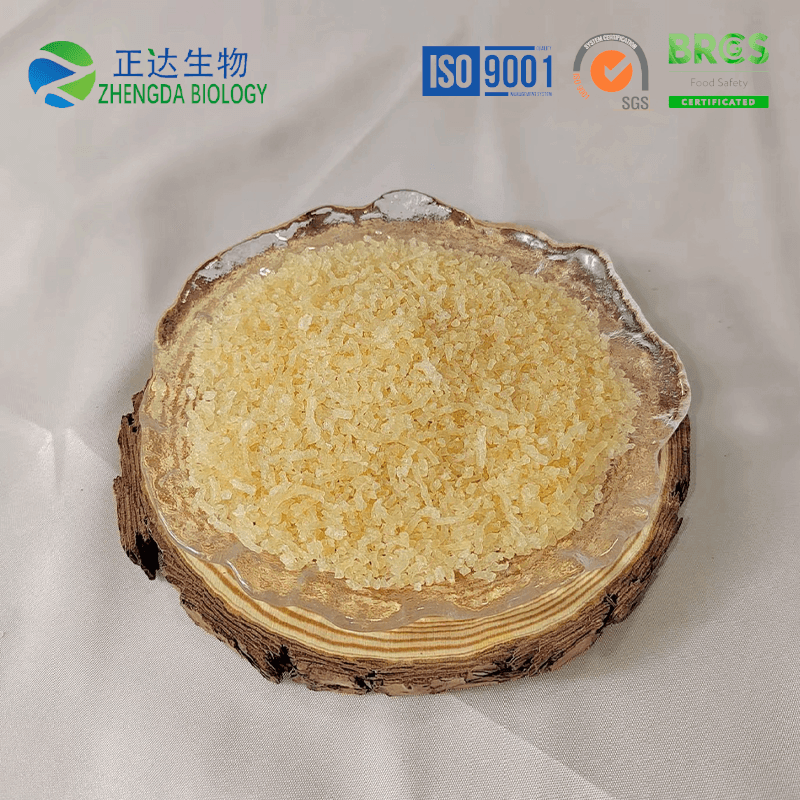
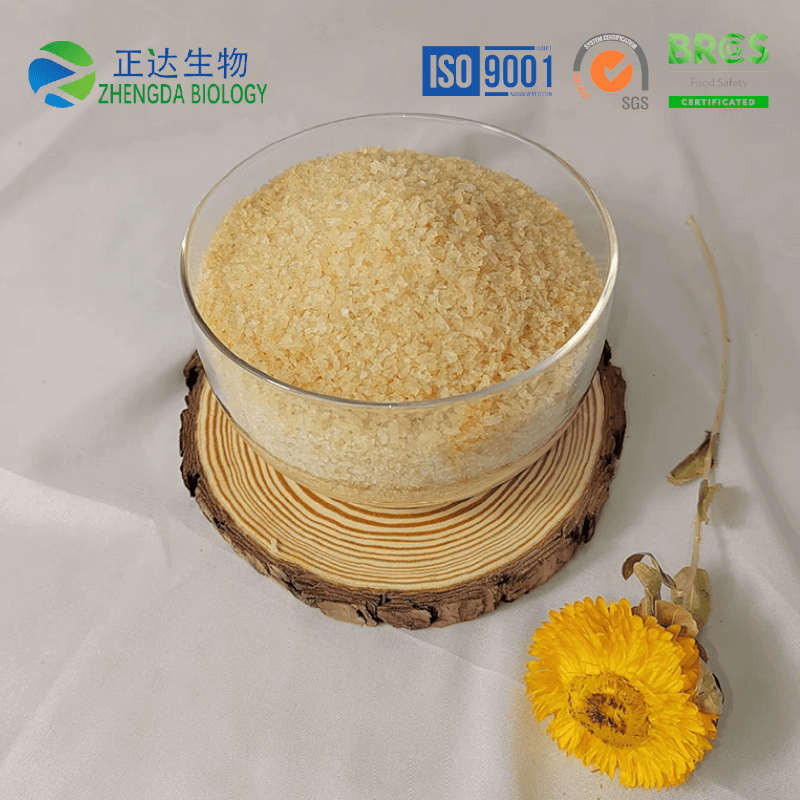
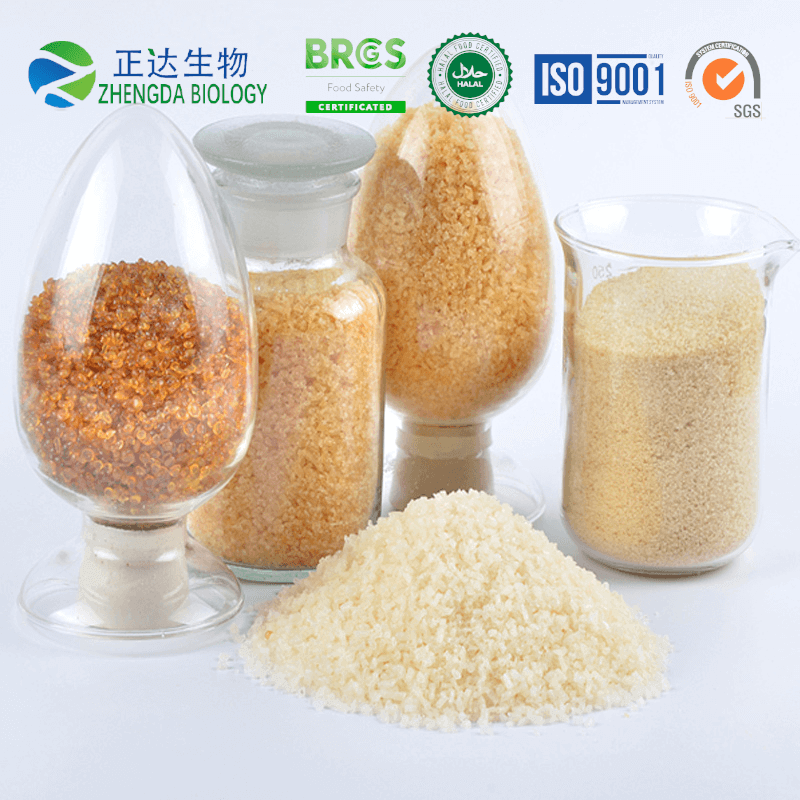
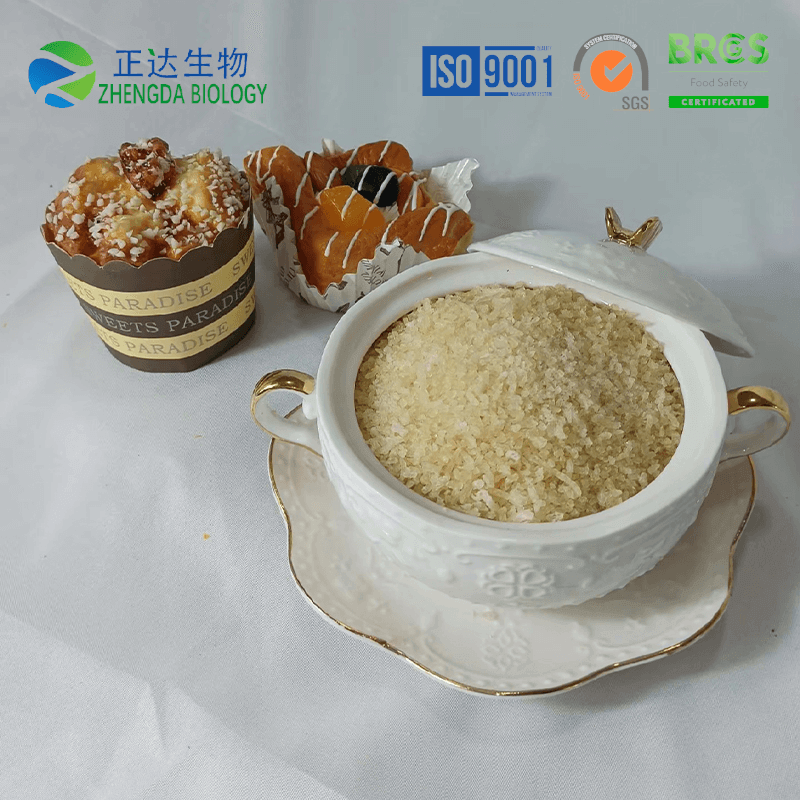
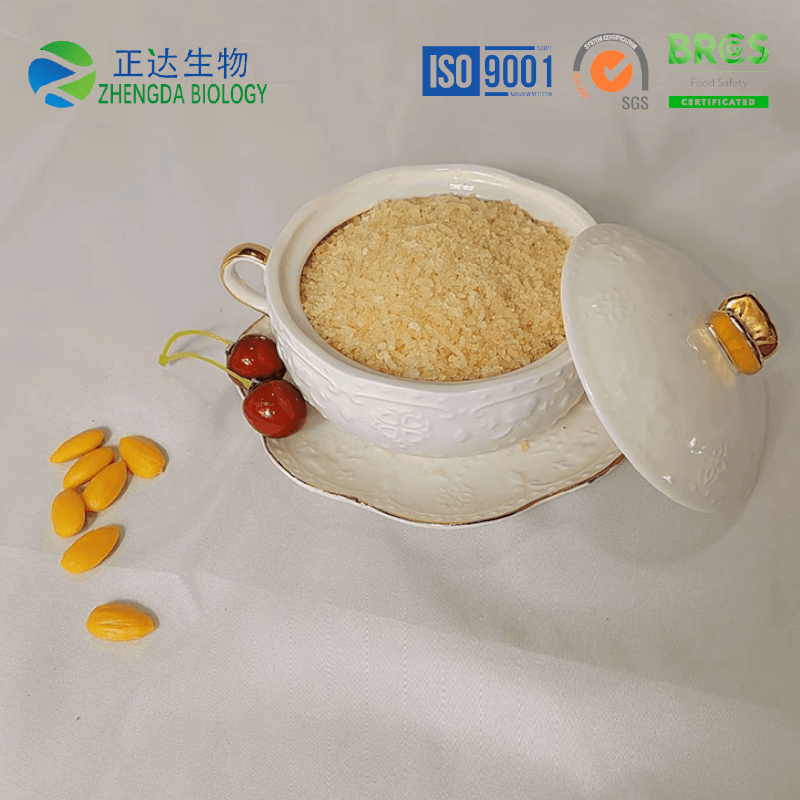
Edible Gelatin
Our Edible Gelatin is a high-quality, food-grade protein derived from natural sources and processed under strict hygiene standards. It offers excellent gelling strength, clarity, and elasticity, making it a perfect ingredient for a wide range of culinary uses.
- Made from 100% animal collagen
- Available in Forms Available (Powder, granule, flakes)
- Acts as a gelling agent, thickener, stabilizer, and emulsifier
- Free from additives, preservatives, and artificial ingredients
- Available in various bloom strengths (typically 80–300 bloom)
Quality = Standard
We strive to maintain the highest standards of quality, innovation, and customer satisfaction, while also fostering long-term partnerships with our clients.
Frequently Asked Questions
All your questions about the Edible Gelatin answered.
Edible gelatin Applications
- Confectionery: Gummies, jelly beans, marshmallows, jellies.
- Desserts: Puddings, panna cotta, mousses, fruit jellies.
- Dairy: Yogurts, cream cheese, low-fat spreads, panna cotta.
- Meat Products: Aspics, canned meats, meat emulsions.
- Beverages: Clarifying agent in juices, wines, and vinegars.
- Bakery: Cake, icings, fillings, and edible decorations.
- Nutraceuticals: Soft and hard capsules, protein supplements.
Functional Properties
Foaming Agent:Used in marshmallows, mousses.
- Binding Agent:Used in meat emulsions and aspics.
- Thickener:Adds body and texture to soups, yogurts, creams.
- Stabilizer:Prevents syneresis (water separation) in dairy/desserts.
- Gelling Agent:Forms thermo-reversible gels – melts at body temperature.
Edible Gelatin FAQ's
Q1: Is edible gelatin safe to consume?
A: Yes, edible gelatin is food-grade and safe for consumption. It meets regulatory standards set by food safety authorities.
Q2: Can edible gelatin be used in cold dishes?
A: Yes, but it must first be dissolved in warm liquid. Once dissolved, it can be incorporated into cold preparations and will set as it cools.
Q3: What is bloom strength and how does it affect gelatin?
A: Bloom strength measures the firmness of the gelatin. Higher bloom means stronger gel. Choose bloom strength based on your specific application.
Q4: Is gelatin suitable for halal or kosher diets?
A: Halal and Kosher certified gelatin are available on the market. Always check the product label or ask us for the certification.
Q5: Can I substitute agar or pectin for gelatin?
A: It depends on the application. Agar and pectin can be alternatives in vegetarian recipes, but they behave differently and require recipe adjustments.
Q6: How much gelatin should I use in a recipe?
A: Usage typically ranges from 0.5% to 3% of the total product weight, depending on the desired firmness and the type of application.
Edible gelatin Features
Natural Origin: Made from 100% animal collagen.
High Purity: Free from additives, preservatives, and artificial ingredients.
Excellent Gel Strength: Available in various bloom strengths (typically 80–300 bloom).
Neutral Taste & Odor: Does not affect the flavor or smell of food products.
Good Solubility: Dissolves easily in warm water and blends well with other ingredients.
Versatile Functionality: Acts as a gelling agent, thickener, stabilizer, and emulsifier.
Nutritional Value: Contains amino acids that support skin, joint, and digestive health.
Bloom Strength in Edible Gelatin
Bloom strength measures the firmness of the gel:
50–120 Bloom: Soft gels (yogurt, spreadable foods)
150–200 Bloom: Medium gels (puddings, mousses)
200–300 Bloom: Firm gels (gummies, capsules)
We supply custom bloom strength gelatin tailored to your application needs.
Edible gelatin Note
Store in a cool, dry place away from direct sunlight.
Avoid exposure to moisture as it may affect gelatin’s gelling capacity.
Not suitable for vegan or vegetarian diets.
Always hydrate gelatin in cold water before heating to activate its gelling properties.
DM us Get wholesale pricing or free samples!
Consistent quality and competitive price, OEM & private label packaging available.
- Strict control
- ADVANCED TECHNOLOGY
- Customer first
- DELIVERY ON TIME
- Excellent quality
- Quality Certification
